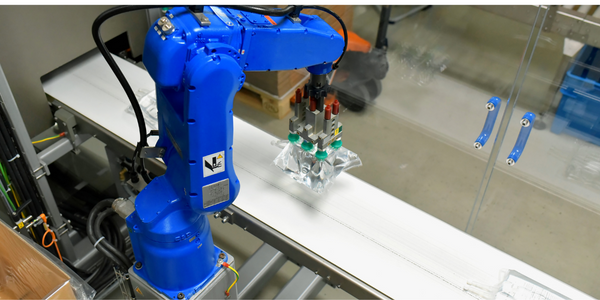下载PDF
Centralizing Biologics Data for a Growing Company
技术
- 平台即服务 (PaaS) - 数据管理平台
适用行业
- 生命科学
适用功能
- 产品研发
服务
- 数据科学服务
挑战
Inhibrx, a company that develops multivalent costimulatory agonists, checkpoint inhibitors, and therapeutics to invert the tumor microenvironment toward local immune activation, was facing several challenges. They did not have a formal tracking system, which resulted in plasmid maps being distributed across multiple scientists’ computers. This made it difficult to find the right plasmid map and often involved walking through the lab to find the right scientist. Additionally, spreadsheets were used to track requests and information about plasmids, which required extensive manual search and limited user compliance. Experimental notes were taken using a shared paper lab notebook, making it difficult to find experimental details and extract insights.
关于客户
Inhibrx is a company that develops multivalent costimulatory agonists, checkpoint inhibitors, and therapeutics to invert the tumor microenvironment toward local immune activation. They are a growing company that is constantly developing new products and solutions. They have a team of scientists who work on various projects and experiments. However, they were facing challenges in tracking their work and data due to the lack of a formal tracking system. This was causing inefficiencies and difficulties in finding the right information when needed.
解决方案
Inhibrx implemented the Benchling Bioregistry, a central source of truth for plasmids that enforces uniqueness constraints to ensure data integrity. This allowed them to have a reliable registration system for their plasmids. They also used Benchling to interlink experimental details. Scientists could link batches to relevant experiments, so their notes directly reflected all of the products and data they’ve generated. Inhibrx also built out a new process development team and onboarded them onto Benchling, where they could access the data of upstream teams. This streamlined their IND filing process as they could use Benchling Lab Notebook entries and unique Lab Notebook IDs to file for IND, saving months of time and effort.
运营影响
数量效益
相关案例.

Case Study
Corporate Identity Solution Adds Convenience to Beckman Coulter
Beckman Coulter wanted to implement a single factor solution for physical and remote logical access to corporate network. Bechman Coulter's users were carrying smart card badges for doors, but also needed a one-time password token to access to our corporate network when they were not in the office. They wanted to simplify the process.

Case Study
Embracing Business Success in Real Time
· Increase control over growing Big Data to improve business decisions · Manage data for 28,000 biotechnology stockkeeping units in the fields of microbiology, molecular biology, animal cell cultures, plant tissue cultures, and lab ware for laboratory chemicals · Accelerate report generation and analysis with real-time data

Case Study
Flow Robotics: Scaling Up Production and Accelerating Product Development with IoT
Flow Robotics, a Danish manufacturer, developed flowbot™ ONE pipetting robots to alleviate the strain on bioanalysts in life-science laboratories and hospitals across Europe. These robots were designed to automate part of the testing process, speeding up the time it takes to produce results and reducing pressure on staff. However, the company faced challenges in scaling up production and accelerating product development. High workloads and physically challenging conditions have long been an issue for laboratory professionals. Flow Robotics estimates that around half of medical lab technicians carry out the same arm movements for at least a quarter of their working day. The American Society for Clinical Pathology reported that 85% of laboratory professionals feel burnt out; 36% struggle with inadequate staffing; and 32% face a heavy workload and pressure to complete all testing on time.

Case Study
Revolutionizing Aerospace Industry with 3D Printing: A 63% Lighter Titanium Part
GE Aviation, a renowned name in the aerospace industry, recognized the potential of 3D printing technology in transforming the sector. The primary challenge was to reduce the weight of the aerospace parts, which would directly impact the fuel costs. A lighter airplane would mean lower fuel consumption, leading to cost savings and a smaller carbon footprint. However, achieving this weight reduction without compromising the strength and functionality of the parts was a significant challenge. Traditional manufacturing methods were not able to provide the desired weight reduction while maintaining the required stiffness and strength of the parts. The challenge was to find a solution that could create strong, light, and functional aerospace parts.
Case Study
Material Intelligence at Ethicon: Sustaining Medical Device Manufacturability and Improving Patient Care
Ethicon, a world-class medical devices company, faced several challenges in its operations. The rapid selection of manufacturing materials compliant in global markets was critical to assure patients, practitioners, and purchasing organizations of the biocompatibility of their medical devices. Ensuring supply chain continuity and minimizing risks of obsolescence for medical devices due to regulatory changes were also crucial in meeting Ethicon’s ongoing commitment to maintaining patient care. Furthermore, the engineers at Ethicon were developing the next generation of medical devices and needed to access historical material data to accelerate new product development. The process of centralizing and digitalizing its materials information was a significant challenge that Ethicon needed to overcome.
Case Study
IWT's Transformation: Customizing with Efficiency in IoT
IWT, a company specializing in the design, manufacture, and installation of washing systems for the life sciences and pharmaceutical industries, faced a significant challenge in managing its wide product portfolio. The company manufactures 45 different models, 60% of which are customized to some degree. This high level of customization, combined with limited production quantities, necessitated a controlled process for managing the release of engineering changes. The goal was to achieve efficiency, reduce process time, and better coordinate production throughout the organization. The need for strict compliance in heavily regulated industries further complicated the situation. IWT's existing PLM journey with Dassault Systèmes’ SOLIDWORKS for 3D CAD and Enovia for managing CAD data and Bills of Materials (BOMs) was proving inadequate. The system had limited part classification, no workflow, and no tool to ensure data consistency. The management of non-CAD documents was also a challenge, with information often difficult to find and access.




